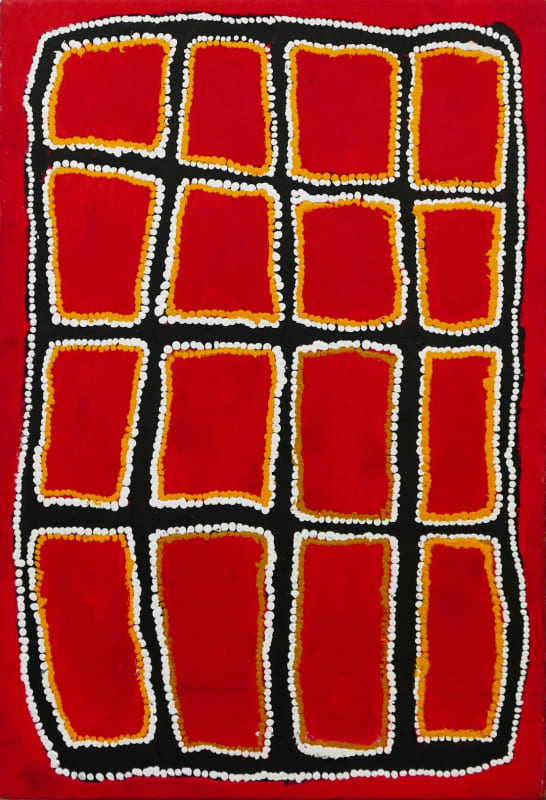These paintings are by the Warlayirti artists who live in three communities: Balgo, Mulan and Billiluna. Balgo itself is situated about 250 kilometers northwest of Alice Springs. This is an area where the vast expanse of the Western Desert to the south meets the rugged sub-topical Kimberley to the north. These contrasting influences are reflected in Balgo Hills art, which is characterized by its diversity.
Until November 1988, communication with the rest of Australia was restricted to radio-telephone; radio reception was unreliable and there was no television. Together with the tendency for Balgo to be isolated annually for at least three months during the wet season, this has enabled the community to maintain traditional culture and to withstand alien influences and commercial exploitation. It was only in the late 1970s, influenced by similar developments at Papunya and Yuendumu, that the dreamtime stories were first painted at Balgo Hills using acrylic on canvas and board rather than traditional materials.
These paintings are mythical landscapes of the central Australian desert. They depict specific sites that have a totemic significance for the artists. The Aboriginal people of Australia have for millennia lived in harmony with their environment, nurturing it through sacred rituals of the endlessly renewed Songlines, which traverse the land. It is the features of this mythographic landscape that are described in these extraordinary paintings.
No living creature, plant or geographical mark is considered too insignificant for inclusion in this world. Rock holes, claypans and sandhills take their place alongside spinifex grass and spiders. The paintings show a reverence for the earth and all that comes from it. Their message and temper is well suited to these times of growing ecological awareness.
The creation of these paintings is a testamonial to a brilliant new art movement, and more importantly, to a resurgence of cultural pride amongst Australia’s first custodians.
